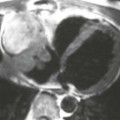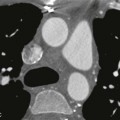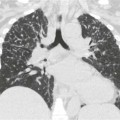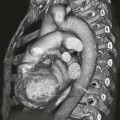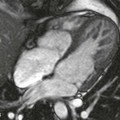Over the years, radiology departments have seen a considerable increase in requests for imaging exams. As a result, everyone’s busy as the pressure to deliver results efficiently and in the fastest time increases daily. This is where structured reporting for radiologists can come in. It can help improve workflow efficiency.
While the format, word usage, and flow of traditional narrative reports vary according to who writes them, the imaging exam findings in a structured report are presented in a standardized and more organized format. These reports are easier to understand, more consistent, and efficient—radiologists save valuable time.

One of the best ways to streamline the radiology reporting process is to use a reliable medical transcription service and similar tools that can be relied on to translate notes into structured templates. As such, radiologists will have more time to read imaging test results instead of focusing on constructing text.
In this article, we will discuss structured reporting and its positive contributions to making the work of radiology teams and departments simpler, more efficient, faster, more effective, and more accurate.
Structured Reporting in Radiology
As already mentioned, structured reporting pertains to the documentation of imaging test results with the help of pre-defined terminology and standardized templates. Radiologists do not need to resort to speech-to-text or write unstructured or free-flowing paragraphs. This reporting process involves the use of structured forms, which they need to fill out. There’s also a guide that radiologists can use to verify and analyze impressions and findings.
What’s Inside Structured Reports:
- Recommendations, Impression, Findings, and other preset sections
- Compatible terminology and language
- Common findings accessed through checkboxes or drop-down options
- Input-based summaries generated automatically
Structured reports for radiologists adhere to guidelines provided by the American College of Radiology (ACR) or the Radiological Society of North America (RSNA). These guidelines are intended to help radiology departments produce quality reports that are easy to understand and interpret, and complete.
The Importance of Workflow Efficiency in Radiology
With the amount of requests that radiology departments get every day, using new technology can significantly help them. However, since the exams are now more detailed, the reports contain more data, which means radiologists have additional information to analyze. Since healthcare systems require accuracy and efficiency—the fastest possible turnaround time despite having limited resources.
This is just one of the many challenges that radiologists need to deal with every day.
Common challenges in radiology workflows include:
- Writing a report takes time
- Communication lines with referring physicians are often inconsistent
- There’s always a risk that they’ll miss important signals or details
- Sometimes, traffic metrics can be a challenge
Once workflow efficiency is improved, things will begin to become a little easier for radiologists—and the first ones to feel it are their patients. This will result in better, faster delivery of reports, specifically the diagnosis and treatments.
Structured Reporting Improves Workflow in Different Ways
These are the challenges that radiology departments deal with daily:
1. Time-Efficient
Since radiologists work with structured templates, there’s no need to think about what or how to write; or how to format the report. All that they need to do is input the findings and then move on to the next patient.
2. Better Communication Channels and Improved Efficiency
Structured reports have one format, which means radiologists can easily refer the report to the doctors. Everything is organized as well, so the doctors can then explain the findings to their patients in a way that’s easy to understand.
3. Minimized Errors
Since structured templates make reports more efficient, radiologists are guaranteed to get all the relevant details. As such, no important information is left out. In addition, structured templates also guide radiologists through the reports so they won’t miss any detail in the findings. As such, they’ll get reports with minimized errors and enhanced quality.
4. AI and Analytics Support
If there are red flags or abnormalities in the reports, Artificial Intelligence can easily detect and analyze them. AI can even help with the diagnosis and research intitiatives. As a result, structured reports are not only complete but also of the best quality.
Structured Reporting Use Cases and Benefits
While it’s not as popular as traditional methods, structured reporting is preferred by many imaging centers and hospitals, especially those that are committed to providing quality service to their patients. Structured reports have several use cases and benefits:
Use cases:
- For suspected strokes, structured CT reports can provide information essential for making urgent medical-related decisions.
- Breast imaging tests use structured BI-RADS templates in determining the next steps to take and classifying findings.
- For lung cancer patients, radiologists use Lung-RADS templates during screening to guarantee efficient monitoring and updates.
The benefits are:
- Turnaround times are significantly faster
- Referring doctors is easier and faster, more satisfying
- Enhanced compliance to reporting guidelines
- Performance reviews and audits are improved and quality is enhanced
Another thing that structured reports guarantee patients across different cases is consistency. So structured reporting makes radiology workflow easier, smoother, and more effective.

Image by AlarconAudiovisual on Pixabay
Dealing with Challenges and Getting Started
While many radiologists have embraced structured reporting, there are still several of them who are unsure and hesitant. One of the possible reasons is the time they need to spend learning the new process or system. Some may also not like the idea of getting stuck using templates and would want to continue implementing personal style in their reports.
However, there are things that can be done to handle such challenges.
What to do for easier adoption:
- Star slow and small: Don’t rush things. Do it one day at a time—or in this case, one report at a time. Start with structured reports for simple exams, such as CT heads and chect X-rays.
- Be Flexible: There are templates that allow the addition of free-text comments when necessary.
- Collect Inputs from the Team: Get the team to contribute inputs when choosing or designing templates.
- Tale Advantage of Supporting Tools: Transcription services and RIS/PACS systems are some of the tools that can help make transition and adoption smoother.
Change is always uncomfortable, and uncertainties can set it, but once the team realizes how easy and efficient structured reporting is, everyone will want to start using it as soon as possible.
Conclusion
Structured reporting is more than just an organized process of writing radiology reports—it is a more efficient, seamless, and effective way of working and ensuring quality outputs. The templates allow radiologists to become more consistent in their reports, enhancing overall quality. They communicate better with the team, they save a significant amount of time, and errors are minimized (if not eliminated).
Additionally, radiologists can benefit from tools, such as a transcription service, when making the switch from traditional to structured reporting. This helps make the adoption process easy to manage. As such, they can refer reports to doctors without hesitation, so the turnaround time is improved and patient satisfaction increases. It’s easier for them to meet the demands of high-quality patient care.
Structured reporting does not undermine the expertise and knowledge of radiologists, rather, it highlights it through the organized, efficient, and most efficient process possible.
Stay updated, free articles. Join our Telegram channel

Full access? Get Clinical Tree


